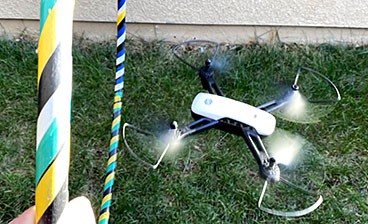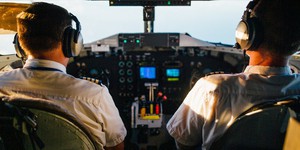Abstract
Have you ever flown a drone? Did you find it easy the first time you tried? In this project, you will fly a drone through an obstacle course and measure how practice changes your performance. Will practice help you finish the course in less time? Try it out!Summary
Objective
Measure if practice at flying a drone through an obstacle course improves performance.
Introduction
Maybe you think of a fun flying toy when you hear the word "drone," but drones are much more. A drone is any unmanned aerial vehicle (UAV), or an aircraft that does not have a human pilot on board. Figure 1 shows an example of a quadcopter, a popular type of drone with four propellers. It can be controlled by a remote control, an onboard computer, or both.
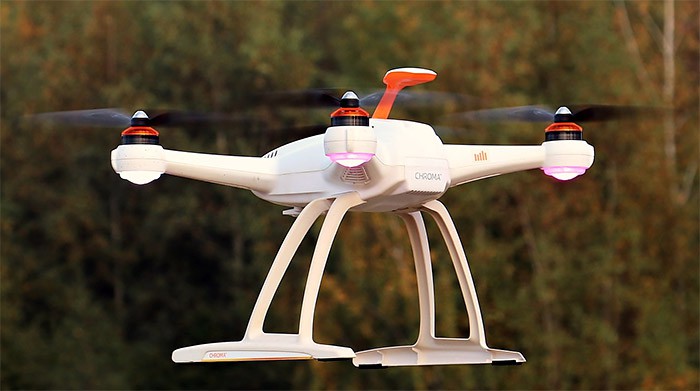 Image Credit: Pixabay user pixel2013 / Pixabay License
Image Credit: Pixabay user pixel2013 / Pixabay License
Figure 1. A drone hovering in the air.
Drones were developed for military use, but they have found their way into civilian life. The photography and film industry, wildfire mapping, in agriculture (for monitoring, seeding, and spraying; see Figure 2), medicine delivery to remote areas, and search-and-rescue operations are just a few areas where drones have proved useful. In addition, an increasing number of hobbyists and children enjoy drones for recreational use. Because drones also introduce a threat to privacy and safety, new laws have been introduced that limit the use of drones.
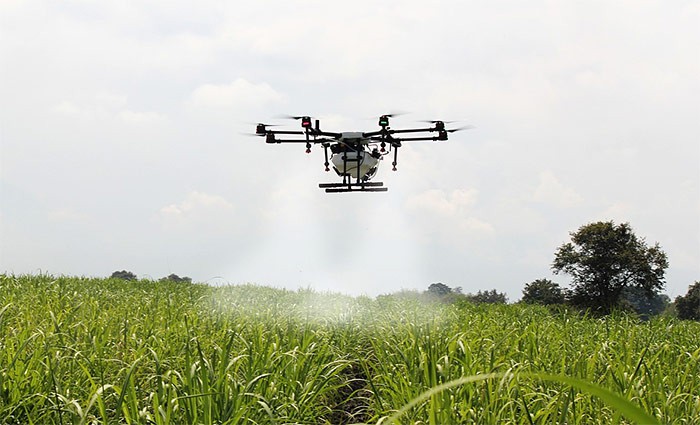 Image Credit: Pixabay user Herney / Pixabay License
Image Credit: Pixabay user Herney / Pixabay License
Figure 2. A drone used in agriculture to spray a chemical on crops.
Drones use sensors to automatically help stabilize themselves during flight. Does that make it easy to fly a drone? In this project, you will create a drone obstacle course, or several obstacle courses, and fly the drone several times through the course. You will measure the time it takes to finish the course and count the number of mishaps that happened during the race. Do you think you will get better at steering the drone through the obstacle course in less time and with more accuracy? Try it out!
Terms and Concepts
- Drone
- Unmanned aerial vehicle (UAV)
- Quadcopter
- Remote control
- Sensor
Questions
- What is the difference between a drone, a model airplane, and a helicopter?
- Why might it be important to be able to fly a drone accurately? Steering a drone accurately means being able to steer it so it goes exactly where you intended it to go.
- When would it be better to pre-program a drone, and when would it be useful to have a pilot with a remote control?
- What do you think is the best way to learn to steer a drone accurately? Would it be harder to steer accurately when the drone flies at high speed? Why do you think this would be the case?
Bibliography
- Facts About Drones. (n.d.). What are Drones? Retrieved March 3, 2021.
- Vyas, K. (2020, June 29). A Brief History of Drones: The Remote Controlled Unmanned Aerial Vehicles (UAVs). Retrieved March 3, 2021.
Materials and Equipment
- Drone that can be controlled remotely, with a remote control, a smartphone, or a tablet
- Open space in which to fly your drone
- Obstacles like cones, large hoops, etc.; the obstacles can also be trees or other landmarks in the open space where you will fly the drone.
- Stopwatch
- Helper
- Lab notebook
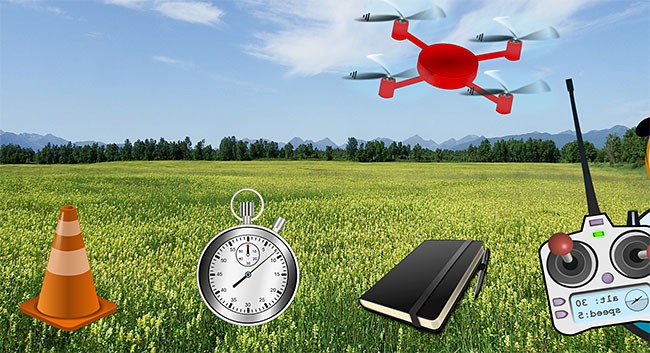 Image Credit: Sabine De Brabandere, Science Buddies / Science Buddies
Image Credit: Sabine De Brabandere, Science Buddies / Science Buddies
Experimental Procedure
- Drones are a lot of fun to fly, but they can be dangerous if not used responsibly. Local, state, and federal regulations about recreational use of drones may vary based on your location or change over time. For example, you may be required to register your drone, or be prohibited from flying it in certain locations (like near an airport or over a crowd of people). Before you do a science project with a drone, ask an adult to help you find out about the applicable laws in your area. Start by checking the Federal Aviation Administration's website for recreational drone operators: https://www.faa.gov/uas/recreational_flyers.
Prepare the Experiment
- Choose an open space where you can safely fly a drone.
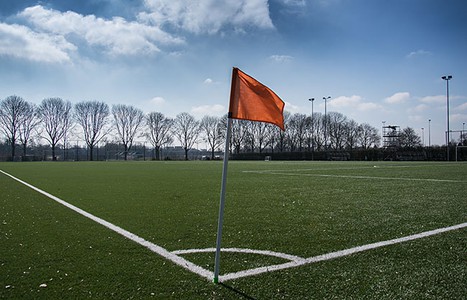 Image Credit: Pixabay user Skitterphoto / Pixabay License
Image Credit: Pixabay user Skitterphoto / Pixabay License
 Image Credit: Pixabay user Natalia_Kollegova / Pixabay License
Image Credit: Pixabay user Natalia_Kollegova / Pixabay License
Figure 3. Examples of open space where it is safe to fly a drone.
- Plan the obstacle course. Think of obstacles to fly your drone around or through.
- Make it difficult enough that you have fun trying something new, but do not make it too difficult, as you do not want to crash the drone! The easiest obstacle course would be flying the drone out to a certain landmark and back for a set number of times (Figure 4). Figure 5 shows an example of a very challenging obstacle course.
- Whatever your obstacle course looks like, flying the course should take about 30–60 seconds. A shorter obstacle course might make the small inaccuracies that are introduced when starting and stopping the stopwatch look huge, and longer courses will drain the battery too fast, which might limit the number of trials you can perform.
 Image Credit: Sabine De Brabandere, Science Buddies / Science Buddies
Image Credit: Sabine De Brabandere, Science Buddies / Science Buddies
Figure 4. An example of an easy drone obstacle course.
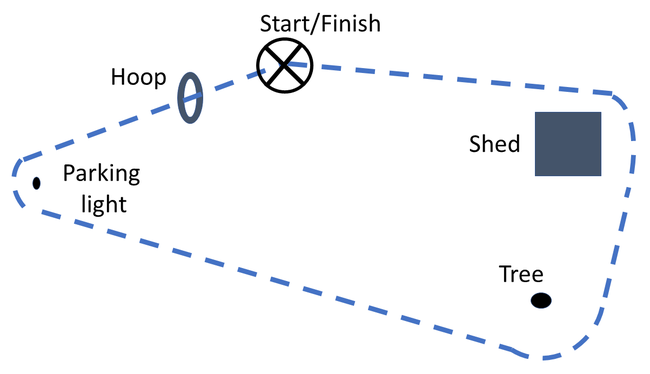 Image Credit: Sabine De Brabandere, Science Buddies / Science Buddies
Image Credit: Sabine De Brabandere, Science Buddies / Science Buddies
Figure 5. An example of a very difficult drone obstacle course.
- This project describes how to collect data to answer the question: "Does practice result in faster completion of the obstacle course and/or one with fewer mishaps?" The Variations section lists a few variations that can be tested with a similar setup and procedure. If you are interested in one of the variations, remember that you might need to adjust the procedure and data table slightly.
- In your lab notebook, make a data table like Table 1. It will help you organize your data. If you plan on testing several pilots, or several obstacle courses, make a table for each pilot and each obstacle course.
| Obstacle course: Date: Pilot: Weather conditions: |
|||
|---|---|---|---|
| Trial number | Number of Mishaps | Time Required | Comments |
| 1 | |||
| 2 | |||
| 3 | |||
| 4 | |||
| 5 | |||
| 6 | |||
| 7 | |||
| 8 | |||
| 9 | |||
| 10 | |||
Collect Data
- Before you head out to collect data, make sure the battery of the drone is fully charged. Charge and bring extra batteries if you have any. Bring your drone, lab notebook, pencil, stopwatch, obstacles (if needed), and helper to the test site.
- Some weather conditions, such as gusty or strong wind, make flying a drone more difficult. Make sure all your trials are performed under similar weather conditions.
- Set up your course, if needed, and explain it to your helper. Do not forget to indicate the take-off and finish area.
- Ask your helper to perform the following three tasks for each trial:
- Start the stopwatch when the drone takes off.
- Be sure the drone follows the course, and count any mishaps (like touching the obstacle, flying under an obstacle instead of over, flying around a hoop instead of through it, etc.).
- Stop the stopwatch when the drone flies over the finish area.
- Perform your first trial. If you decide this course is not working, change it and start again with a new first trial for the new course. Do not change the course while you are collecting data on a course; trials 1–10 should all be from the same course and with the same pilot.
- After each trial, note down the number of mishaps, the time it took to finish the course, and any comments that might be useful. When you crash the drone in flight, mark in the comments what obstacle led to the crash. Write "unfinished" as the time and fill in the number of mishaps, including the crash.
- Continue with your next trial.
- Repeat steps 6 and 7 until you have performed 10 trials, or until the drone is out of battery.
Analyze Data
- Look at the data you collected; do you notice a trend in the data?
- Graph your data. Make two graphs:
- Number of mishaps versus trial number. This graph has the trial number on the x-axis (horizontal) and the number of mishaps on the y-axis (vertical).
- Time required versus trial number. This graph has the trial number on the x-axis (horizontal) and the time it took to finish the course on the y-axis (vertical).
- Looking at the data and the graphs, can you conclude that the number of mishaps increases or decreases as you get more practice? Does practice result in faster or slower completion of the obstacle course? Does the change happen in the first few trials, then level out, or do you see a similar change each time? Maybe your data is inconclusive, or does your data show that practice does not alter your performance to finish this course?
- Optional: Consider exploring if more mishaps happen when you fly the drone faster. Do you see a trend when you graph the number of mishaps versus the time it takes to finish the course? Are the first few trials clustered in one area of this graph and the last few in another? If so, what does that mean? Can the data you have collected help you find out the answer to these questions? If not, what data would you need to find out?
- What other questions do you have? Maybe you wonder if your conclusions are valid regardless of the difficulty level of the obstacle course. If so, what other data would you need to answer this question? If you are curious whether your conclusions are valid for most pilots, can you extend your experiment to include data that would allow you to answer this question? To protect the drone, make sure to keep the obstacle course is easy for inexperienced pilots!
Ask an Expert
Global Connections
The United Nations Sustainable Development Goals (UNSDGs) are a blueprint to achieve a better and more sustainable future for all.
Variations
- In this project, you are evaluating whether practice flying in an obstacle course increases the accuracy and the time required to complete an obstacle course. You can also study if experienced pilots complete the course more accurately and faster compared to inexperienced pilots.
- Some drones send live video to the controller from an on-board camera. This lets the pilot steer in "first-person" view by looking at the drone's perspective on the screen, as opposed to "third-person" view (looking at the drone itself). Can you compare your performance flying the drone with first- and third-person views? In this variation, you should test multiple obstacle courses, and alternate which view you use first to test a course. Otherwise, the second method might always have an advantage since you have had more practice with the course. Alternatively, you could recruit a large number of volunteers and have half of them only fly in third person, and the others only fly in first person, then compare average times between the groups.
- If your drone has a camera to record the flight, the camera might help you get more-accurate time data. In addition, an obstacle can be to hover for a second or two over a specific point, or to follow a chalk line, etc.
Careers
If you like this project, you might enjoy exploring these related careers:
Related Links
- Science Fair Project Guide
- Other Ideas Like This
- Robotics Project Ideas
- Human Behavior Project Ideas
- My Favorites


